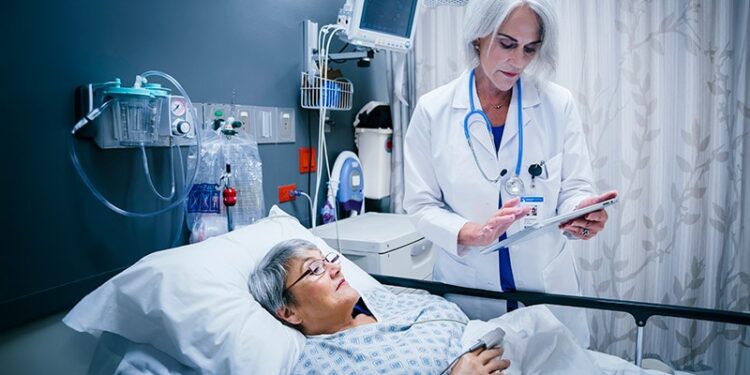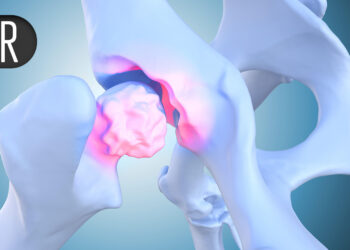During your rounds if you discover that a patient seems to be losing weight, appears weaker, or is showing signs of malnourishment, there are some nutritional tweaks you can make based on symptoms.
Here are strategies from experts who can help you make assessments and recommendations.
Weight loss. A hospitalist should be aware of any major changes in body weight, specifically monitoring for any muscle or fat loss, said Amy Bragagnini, MS, RD, CSO, spokesperson for the Academy of Nutrition and Dietetics and a clinical oncology dietitian at Trinity Health Richard J. Lacks Cancer Center in Grand Rapids, Michigan. She recommends bringing a registered dietitian on board to assist with monitoring for severe or chronic malnutrition. “I find that sometimes weights taken in the hospital can change drastically, especially if patients are receiving IV [intravenous] fluids, undergoing paracentesis, or on hemodialysis,” said Bragagnini.
Loss of appetite. When a patient is experiencing a loss of appetite, it is important to ask how long their appetite has been poor. “If their appetite has been diminished for weeks to months, it may be time to consider adding an appetite stimulant to promote hunger cues,” said Darien Dempsey, RDN, LDN, a clinical dietitian at Temple University Hospital in Philadelphia. “If a patient has had a loss of appetite related to feeling sick, then it would be best to liberalize their diet and recommend adding snacks or oral nutritional supplements to optimize caloric and protein intake.”

Persistent nausea. If a patient is experiencing persistent nausea, recommend eating smaller, more frequent meals so as to not overwhelm their stomach with large amounts of food at once, said Dempsey. Also tell the patient to avoid foods with strong smells or very spicy foods. “It would be best to choose bland foods, such as crackers, toast, and rice,” noted Dempsey. “Additionally, encourage the patient to sit upright after eating for at least 30 minutes as laying down after a meal can slow digestion and worsen nausea.”
Disliking food. If a patient expresses that they do not like hospital food, Dempsey recommends printing out a copy of the hospital menu to see all the choices. Additionally, you could encourage their visitors to provide snacks for them to have throughout the day while admitted. “It would be recommended to speak with the visitors prior to having them bring in foods to make sure they provide snacks that align with dietary recommendations and to prevent worsening the patient’s clinical status,” she said.
Delayed wound healing. If a patient is not adequately eating, then this can lead to delayed wound healing, said Dempsey. “If they are eating minimally, emphasize the importance of protein intake to assist with wound healing, and encourage fruit and vegetable intake since they contain ample vitamins and minerals that assist with wound healing,” she added. Furthermore, consider checking the patient’s A1c lab or routine blood sugar checks, as diabetes can worsen wound healing, she said.
Altered taste. Changes to taste can be a common cause of poor appetite or intake. “For these patients, continued loss of appetite is associated with a higher risk for malnutrition,” said Bridgette de Juan, a registered dietitian with Orlando Health in Florida. “Hospitalists can investigate whether these changes are related to side-effects of medications, a zinc deficiency, or taste perception associated with denture use.”
Too many diet restrictions. Therapeutic diets are important for certain medical conditions, however factoring a patient’s appetite, willingness/ability to eat, portion completion of their meals, or recent weight loss, may be an indication to liberalize their in-patient diet, said de Juan. Some dietary restrictions can pose unique challenges as the provision of adequate nutrients (protein, micronutrients) result in meals or foods that are not palatable, which negatively affects patients who are already suffering from poor appetite or inability to complete their meals, she said.
Patient-Centered and Positive Mindset Will Work Best
Aim for an approach that keeps the patient’s care at the center of discussions and objectives. Look to empower patients to make balanced choices with their diet and nutrition, said Bragagnini with the Academy of Nutrition and Dietetics.
“For example, if a patient needs to consume more fluids, ask them what types of beverages they like and see what may be holding them back by drinking more,” she said.
Or if a patient has expressed little desire to eat, use an understanding tone and explain that it’s possible a lot of the medications they have been receiving can reduce their appetite. “Then remind them that every bite of food they take counts,” she said. “Overall, physicians should also consult the hospital’s registered dietitian, who can spend time with patients and can get to the root of whatever the nutritional concerns are for them.”
How to Involve the Patient’s Family
Before consulting or discussing nourishment concerns, Bragagnini cautions to be sure the patient is comfortable speaking about what they have been eating (or not eating) around various family members.
“Often there may be a strain between family members and patients around various nutrition-related topics,” she said. If the patient is okay with family discussions, she said family members can play an important role in encouraging adequate nutritional intake as well as helping the patient get groceries, prep meals in advance, and bring food into the hospital if needed.
What Are the Directives for Older Patients?
Older adult patients require special attention as they often experience malnutrition resulting from multifactorial conditions, such as anorexia of aging, dysphagia, or pressure injuries, said de Juan, with Orlando Health. “Many of these patient populations benefit from early nutrition assessments with a registered dietitian,” she said.
Source link : https://www.medscape.com/viewarticle/nutritional-tweaks-inpatients-who-lack-good-nourishment-2025a1000kps?src=rss
Author :
Publish date : 2025-08-05 07:16:00
Copyright for syndicated content belongs to the linked Source.














